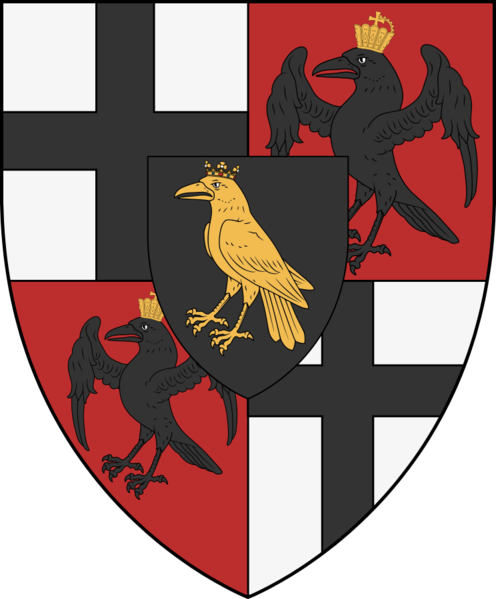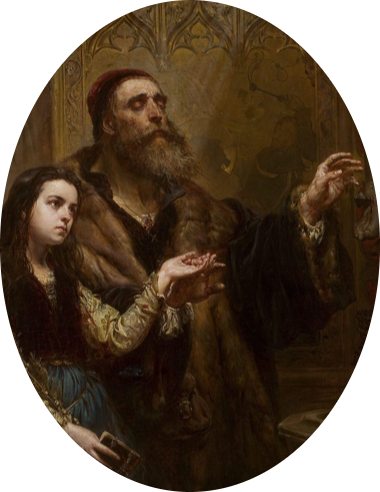The LORD PALATINE, or officially known as the LORD PALATINE AND CHANCELLOR OF THE CROWN, is the penultimate authority of the realm, second only to the Sovereign of Haense, and leads the realm as Head of Government and first aide to the sovereign at his/her behest. Historically, the Lord Palatines have held massive authority, rivalling that of some modern monarchs, and traditionally operate as one of the crown’s most loyal and zeal subjects in accomplishing its interests and goals. The most likely candidate for selection has typically been from Haense’s sprawling nobility and gentry, though there have been cases where clergy (VIII) and even commoners (XIII) have held the seat.
Historically, early in Haense’s history there have been more palatines with military backgrounds while later palatines have been pulled from more bureaucratic and aristocratic backgrounds. The growth of complexity of law, rulership, and provincial divides is part of this, as well as Haense’s gradual shift between the late 100s and the early 200s from a military monarch in the likes of Petyr I and the Gold Corps to a more bureaucratic and tradition-based society. Another interesting trend is the apparent rise and fall of certain families through their palatinate history, from the Kovachevs, Bihars, Rutherns, and to the more recent Stafyrs.
The office holder is distinguished by the golden bulava of the State and Army, carried only by the Sovereign, and traditionally holds command over both domestic and militaristic affairs (with exception). Since the era of Robert Bihar’s second term in 233, the Lord Palatines have also been traditionally active in Duma politics and actively supporting the legislature through its chambers. Notable office holders include Ser Rickard Barrow (I), Prince Karl-Sigmar (II), Ser Lukas Vanir (IV), Prince Henrik Bihar (VII), Prince Robert Bihar (XI and XV), Ser Matyas Colborn (XIV), Leopold Stafyr, Count of Nenzing (XVIII), and Lerald Vyronov, Duke of Carnatia (XX).
As of 363, three officeholders have died in office (XIX , XXV and XXVI), four from battle or injuries sustained in battle (IV, VI, VII and XVIII), and one from illness though under mysterious circumstances (XX). Four officeholders have resigned under political pressure (II, III, IX and XVI), one officeholder has been imprisoned, tried, and executed for treason (XIII), thirteen officeholders have resigned due to personal interest, health, or age (I, V, X, XI, XIV, XV, XVII, XXI, XXII, XXIII, XXIV, XXVII, XXVIII), while one officeholder was elevated to greater office, with one High Pontiff (VIII) and one Koeng of Haense (XII).

Peter of Siguine Barbanov
1578 A.H. – 1582 A.H. | 131 E.S. – 135 E.S.
Sir Rickard Barrow (Common: Richard Barrow), renowned general and administrator, served as Lord Palatine throughout the entirety of Petyr I’s reign (131-135) and beginning two of Andrik II’s (135-137). Previously a veteran of Petyr’s condottiere Gold Corps and Haense’s inaugural victory in the Riga War, Rickard was immensely popular among the soldiers and nobility alike, and frequently participated in both the affairs of state and military. He commanded the Haeseni forces directly during the burgeoning skirmishes of the newborn realm, who still struggled with rebellious banditry which refused to recognize the united monarchy, and scored countless victories over the divided marauders.
His power and grip on national affairs grew exponentially, and he effectively controlled the kingdom in the waning years of Petyr’s declining health and the first two years of Andrik’s rule. From his early career in the Gold Corps, Rickard was a patron of the Church of the Canon, sponsoring and supporting numerous pontifical candidates before and during his tenure as palatine, including the future Saint Pontiff Sixtus IV. After surmounting tension between himself and a joint faction of Andrik and his brother Karl-Sigmar (who both desired power of government be returned to the king), as well as his increasing age, Rickard resigned from his post, though he remained a highly influential courtier and a direct participant in the later Deep Cold Uprising of 139, where he directly opposed the king in his attempt at rebellion from the Holy Orenian Empire.
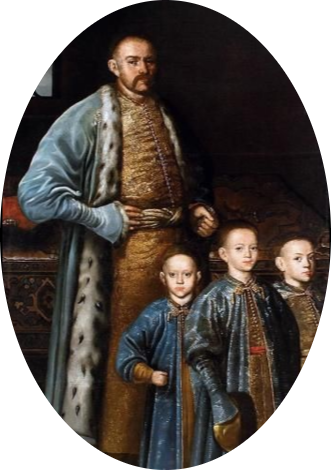
Prinz Karl-Sigmar van Haenz
Prinz Karl-Sigmar van Haenz
Prince Charles-Siguine of Haense
1584 A.H. – 1593 A.H. | 137 E.S. – 146 E.S.
Prince Karl-Sigmar (Common: Charles-Siguine) was a Haeseni prince, the son of King Petyr I, and general who served as Lord Palatine for nine years from the last two years of Andrik II’s reign to the turbulent regency of Marus I. At first, an early supporter of his brother Andrik, he assisted him in his effective coup of former palatine Rickard Barrow and helped consolidate his power both civic and militarily. However, when Andrik II, spurned on by anti-Imperialists from numerous disenfranchised families including the Brawms, launched his Deep Cold Uprising in the wake of Emperor John IV’s death (139), Karl turned against his brother, and supported Rickard in removing Andrik from the throne in the stead of his minor son, Marus.
Karl led the regency for the minority of Marus I, which became a haven of political intrigue and noble infighting between the numerous military families of Haense, each vying for power. The royal capital, which still remained undeveloped till now, was formally built-up under Karl and his regency, and in the wake of the chaotic civil unrest, he consolidated royalist power towards the once central city. Despite his frequent conflicts with the much of the nobility, he was able to bring them to relative peace by the end of his tenure, brought to simmering standstill by his expanded royalist retinues.
His successes, however, were short-lived, as by the end of the regency many of the hyper-Sergeyist nobility, unhappy with his centralist tendencies, steadily gained prestigious positions in court and actively sought to have him removed. They were eventually successful, and in 146 he resigned from office under pressure by the senior nobility only a few weeks after Marus’ accession. He remained active in royalist government affairs, and retained the rank of general until his death in 155.

Heinrik Kovachev
Heinrik Kovachev, 6th Herzen van Karnatiya
Henry Kovacs, 6th Duke of Carnatia
1593 A.H. – 1598 A.H. | 146 E.S. – 151 E.S.
Heinrik Kovachev (Common: Henry Kovacs) was a Haeseni nobleman and the Duke of Carnatia, serving as Lord Palatine after the noble-ousting of Prince Karl-Sigmar in 146. He preferred the management of his own estates to that of the realm, namely being chosen as Lord Palatine as to sait the powerful Kovachev family after the turbulent regency of Prince Karl-Sigmar. For nearly the entirety of his tenure, he performed poorly in his duties as head of government, leaving both the military and treasury in shambles due to his inadequacy. His lack of attention to the affairs of state, the embezzlement of royal funds for his private fiefs, and his boiling tensions with the rival Brawm family led to his eventual dismissal and fall from grace in 151.

Ser Lukas Vanir
Sir Lukas Vanir
Sir Lucas Vanir
1598 A.H. – 1612 A.H. | 151 E.S. – 165 E.S
Sir Lukas Vanir (Common: Lucas Vanir) was a Haeseni noble and statesman who served as Lord Palatine from 151 till Marus I’s death in 164. Lukas was the second son of the late Britannus Vanir and brother to the popular Fiske Vanir the Bloody, veteran and general of the Riga War, who he often found himself in his shadow. Following an impeccable career as maer and bureaucrat during the Johannesburg Refugee Crisis of the 150s, he came to rise quickly amongst the struggling royalists following the collapse of Karl-Sigmar’s government and an eventual candidate as palatine.
A strict centralist, he would spend a majority of his time in office pushing policies that furthered the central government’s authority while slowly revoking the power of the nobility. Lukas proved successful domestically, though militarily the army remained under staunch Sergeyist sympathizers, including former palatine Heinrik Kovachev and his cousin Andrik Kovachev, and rebuffed most efforts of reform. The military therefore remained split two-ways between a royalist sector led by Prince Karl-Sigmar and his eldest son Prince Stefan Bihar and the private armies of the feudal estates, led in weak alliance between the powerful Haeseni clans such as the Kovachevs, Vanirs, Rutherns, and Brawms.
Lukas would lead a successful war against a short rebellion by the Brawm family in 153, and after early victories, his government grew more emboldened against the expansionist Curonians of the Coalition War-era. The divided army, however, proved ineffective as time loomed on, and after a few major losses in the east and west respectively, the royalist government of Marus I fled into exile. Lukas followed the government with, and remained in Mardon till the king’s death and Lukas’ expiration of post, where he followed Stefan to the Second Battle of the Rothswald, succumbing to injuries sustained in the victorious fight

Ser Maverik Madonvik
Sir Maverik Madonvik
Sir Maverick Macdonough
1612 A.H. | 165 E.S
Sir Maverik Madonvik (Common: Maverick Macdonough; Kvenish: Maaveerok Maadonais) was a Haeseni-Kvenoman nobleman who served as Lord Palatine briefly in 164 following the death of Petyr II and the victory of Stefan I at the Second Battle of the Rothswood. He oversaw the Duma of 164 which saw Stefan elected as the King of Haense and the restoration of the Haeseni state, though when the affairs of office soon began to take a toll, he resigned from office in favor of his nephew, Jakob.
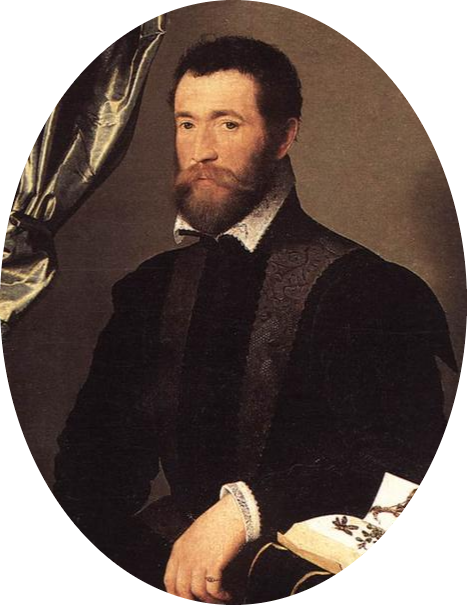
Sir James Macdonough
1612 A.H. – 1613 A.H. | 165 E.S. – 166 E.S
Sir Jakob Madonvik (Common: James Macdonough; Kvenish: Veikko Maadonais) was a Haeseni-Kvenoman nobleman who served as Lord Palatine from 164 to 166 under the restored monarchy of Stefan I. A staunch supporter of the royalist cause, he was a vibrant zealot in the pursuit of restored royal control and powers to the crown, and initially enjoyed some success in extracting taxes and levies from the returning nobility. However, he experienced failures at the start of border skirmishes with the northern realm of Nordenlund in the Second Northern War, where at the Battle of Rostig (166) he was slain in combat following a failed flank of his cavalry.
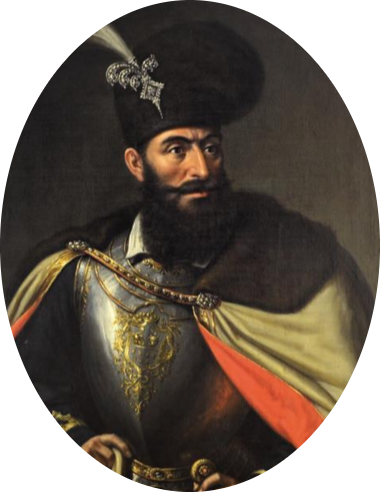
Henry of Bihar, 1st Prince of Bihar
1613 A.H. – 1624 A.H. | 166 E.S. – 177 E.S.
Heinrik Bihar (Common: Henry Bihar) was a Haeseni prince, saint, and nobleman, a descendant of House Barbanov through former palatine Karl-Sigmar, who himself served as Lord Palatine from 166 to the end of the reign of Stefan I at 177. At first appointed for his military talent, where he quickly reversed the fortunes of the Second Northern War with key appointments of famed generals Alessa Grendok and Cullen Valerin. The military of Haeseni swelled after his appointment, and it was under Heinrik that the kingdom adopted Carnatian cavalry tactics for the royal army. He personally commanded numerous offensive raids against the Nordenlund holdings, winning countless battles and skirmishes along the border.
He also grew in fame for his skill in stewardship and administration, where through his work, he oversaw the reconstruction of a vast majority of the salted and destroyed Haeseni farmland and wilderness, raising also villages and forts ransacked or ruined by the occupying Courland forces of the earlier Greyspine Rebellion. By the early 170s, Haense had emerged from a backwater imperial province to one of the richest realms of humanity, in part of Heinrik’s government and taxation reforms. Heinrik also took an active part in Stefan’s plots against the imperial state, commanding the Haeseni forces in the imperial capital both times which led to the deposition of Emperor John V and Lord Protector Robert of Marna. His death in 177 coincided with that of his patron and sovereign Stefan, with some believing it to be an act of espionage from the court of Emperor Peter II.
Heinrik’s philosophy of ruling, known as Biharism, has become the leading ideology of Haense, outlining a basic concept of moral integrity, cultural expectations of honor, hierarchy, tradition, and national values of individualism, self-reliance, and scholarship. It is famously attributed to Heinrik to common Haeseni proverb and state motto, “I would have perished if I had not persisted.” A notable characteristic of Heinrik was his charity, donating mass sums of the profits of his private estates to the local church and sponsoring the study of Haeseni literature. For his patronage of clerical and theological thinking, he was later canonized by the Church of the Canon as Saint Henry of Bihar.
Joseph of Alban, Archbishop of Jorenus
1627 A.H. – 1633 A.H. | 180 E.S. – 186 E.S
Josef Baldemar (Common: Joseph Baldwin) was a Haeseni clergyman and Archbishop of Jorenus who served as Lord Palatine at the beginning of Otto II’s reign. His term saw the combating of poverty among the common citizenry and the codification of laws that promoted decency in public conduct. He continued his predecessor’s moral philosophy of Biharism, if not giving it more religious overtones, though retained a notably pacifist approach much to the annoyance of former rulers Stefan and Otto I’s court. His election as High Pontiff in 186 saw effective resignation from office, though he remained highly prolific in Haeseni political life due to his position
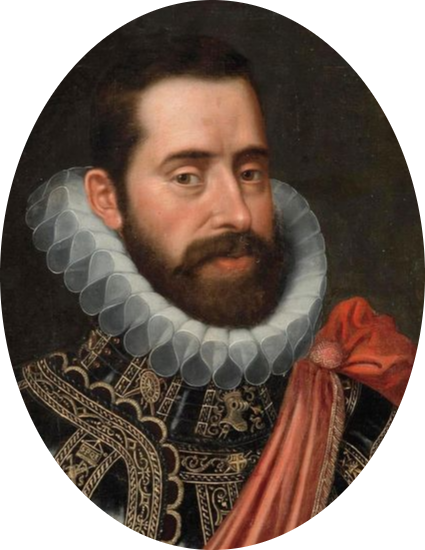
Sir Fordson Kingston
1633 A.H. – 1638 A.H. | 186 E.S. – 191 E.S.
Sir Fordsen Kyngeston (Common: Fordson Kingston) was a Haeseni nobleman and general who served as Palatine during the middle years of Otto II’s reign. A soldier by trade, Fordsen suffered a staggering lose as Vasiland (188) in the War of the Beards, though performed amicably in defending the realm during a second wave of Nordenlund raids of the Third Northern War, defeating them decisively at the Battle of Ayr in 190. The early death of general Alessa Grendok, however, at the Battle of Isinburk in 189 landed a serious blow to both the army and Fordsen, to which the officer corps was unable to recover from for some years.
Fordsen’s preference on military affairs led to numerous conflicts with his brother and fellow councilmen Anton Kyngeston (Common: Anthony Kingston), and a small civil war between the brothers in the streets of the capital known as the War of the Quackers. Following a fight which led to the lethal injury of his brother Anton in 191, Fordsen was dismissed from office by Otto II, later to be tried a few years later under the government of his successor Sergey Kovachev.
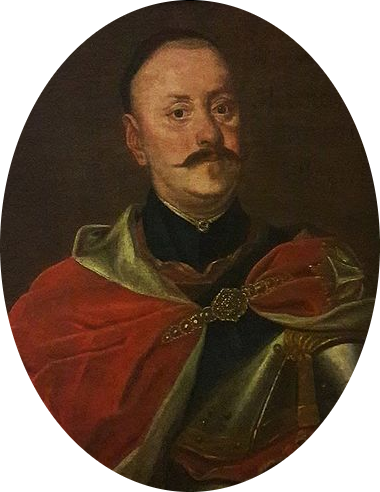
Sergius Kovachev, 9th Duke of Carnatia
1638 A.H. – 1642 A.H. | 191 E.S. – 195 E.S
Sergey Kovachev (Common: Sergius Kovachev) was a Haeseni nobleman, general, and the Duke of Carnatia who served as Lord Palatine for four years between 191 and 195. A veteran of the Greyspine Rebellion under Stefan and a renowned general at the time, he regained losses made militarily under his predecessor though enjoyed an overall unremarkable career as palatine. He resigned after a paltry four years in office and returned to the army, serving as a general for the remainder of his life.

Robert of Bihar, 2nd Prince of Bihar
1642 A.H. – 1655 A.H. | 195 E.S. – 208 E.S.
Prince Robert Bihar (Common: Robert Bihar) was a Haeseni prince and nobleman, father of future monarch Sigmar I, and served as Lord Palatine (for a first term) from the ending years of Otto II and throughout the reign of his son Otto III (195-208). The son of famous palatine Prince Heinrik, he was groomed from his early youth for the position. He promoted policies closely linked to Everardian-Biharism political philosophy, strengthening the overall authority of the Crown and promoting free trade across the kingdom in a series of trade laws and agreements known as the Estermont-Bihar Acts.
As a strict Everardian moralist, Prince Robert signed many landmark bills that strengthened crime and sentencing laws such as the Crime Prevention and Enforcement Act of 199 that instituted punitive measures on drug possession and felonies, as well as increasing the power of the clergy by signing laws to strengthen secular scrutiny on injuries against the faith. Robert took a particular leadership role in the Czena Crisis and the ensuing conflicts between the heartlander states of Renatus and the northern free-states of Curon and Haense.
He led an initial string of victories against Renatus, though after a few staggering defeats in Curon by 208, the local government demanded some form of change. Following Otto III’s death, his main benefactor and patron, in the same year, Robert was forced into resignation by the more militant members of court under the leadership of his brother Prince Franz Bihar.
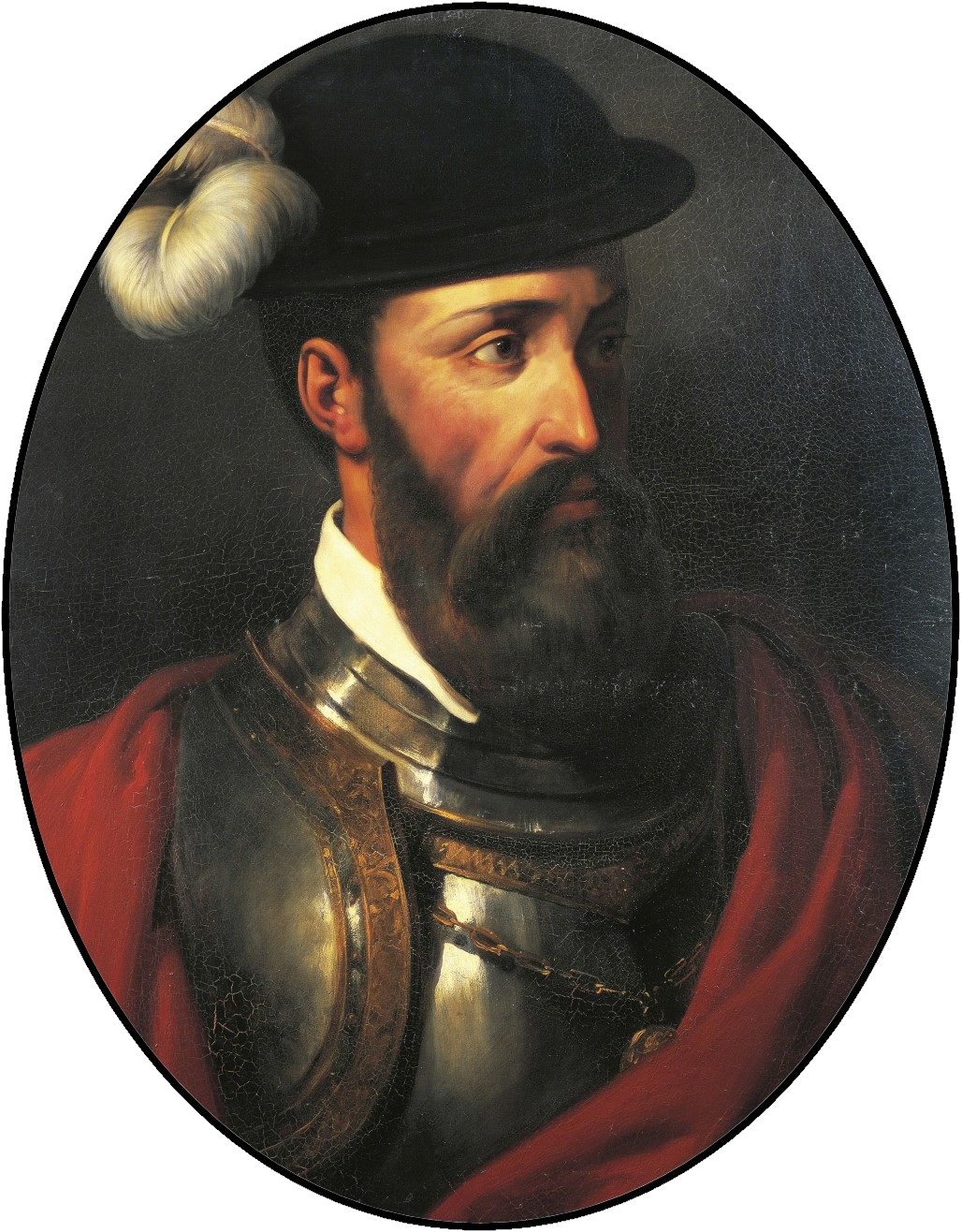
Sir Francis of Bihar
1655 A.H. – 1666 A.H. | 208 E.S. – 219 E.S
Sir Franz of Bihar (Common: Francis Bihar) was a Haeseni nobleman and general who served as Lord Palatine for the entirety of Karl II’s reign till his own elevation as King in 219. Franz was a well-known militarist by the time of his appointment, having been the most vocal critic of his predecessor’s role in the Czena Crisis, and spent most of his career as Lord Palatine commanding Haeseni forces in the ensuing conflicts. Though he gained few victories, he retained a strong support and loyalty from amongst the military, and he kept the invading heartlander estates from invading into the Haeseni basin. Upon Karl’s death and the conflict of control over the throne, Franz led a short, bloodless palace coup with his loyal soldiers, effectively declaring himself monarch.

Charles of the Rothswald
1666 A.H. – 1670 A.H. | 219 E.S. – 223 E.S.
Karl van der Rothsvald (Common: Charles of the Rothswald) was a Haeseni commoner and preacher, who served as Lord Palatine for four years from the death of Franz II till Sigmar I’s arrival into the royal capital. A monk by trade, he rallied the Haeseni peasantry in the wake of Franz II’s death and seized control of the royal capital, where he declared himself Lord Palatine under a council of peasant leaders. While technically ruling under the ascent of Sigmar I, he refused the former to enter the royal capital for four years, ruling the realm de facto by his accord. After Sigmar returned with a sizable force of his own in 223, the soldiery loyal to Karl surrendered without a fight, and he was summarily tried and executed by Sigmar’s court.
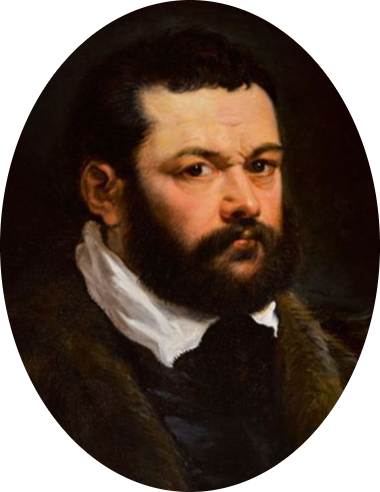
Sir Matthias Colborn
1670 A.H. – 1680 A.H. | 223 E.S. – 233 E.S
Sir Matyas Colborn (Common: Matthias Colborn) was a Haeseni nobleman who served as Lord Palatine for ten years. Matyas’ tenure came to coincide with the end of the Czena Crisis and Haense’s capitulation to the heartlander estates after the disastrous Sigmar’s War and the Battle of Karl’s Hill. A bureaucrat and writer by education, Matyas restored much of the damage caused by the king’s expansionist wars and costly treaties, restoring much of the treasury drained by decades of border wars and skirmishes.
Later, which became a focus of his career, Matyas began a campaign against the growing cultists of the sect known as the Rotsvaeyl, which became a point of public hysteria well into the late 220s and 230s. His efforts reopenned Haense diplomatically both to many of the former heartlander estates as well as the Church of the Canon, who had excommunicated former King Karl II. Matyas performed the duties of a diplomat quite successfully in securing advantageous treaties for the Haeseni state.
Matyas’ greatest achievement and legacy, however, was his first inroads in diplomacy with non-human states, who at the time had very little to no interaction with the dominant human realm of Haense. Towards the end of Sigmar’s reign, who became increasingly distracted from royal affairs, Matyas assumed more and more duties of the state, though he soon grew to resent the added labor of state, and retired fully in 233 in order to fully pursue his interests in the occult. He retired as a historian and author, though remained active somewhat in Duma life till his death.

Prinz Robert van Bihar
Robert var Bihar, 2nd Prizen van Bihar
Robert of Bihar, 2nd Prince of Bihar
1680 A.H. – 1688 A.H. | 233 E.S. – 241 E.S.
Prince Robert of Bihar (Common: Robert Bihar) was a Haeseni prince and nobleman who served as Lord Palatine (for a second term) during the waning years of his son Sigmar’s reign and the beginning years of his grandson Robert’s rule. After staying out of public life for twenty years, he was summoned by his son to serve as Lord Palatine, being the first and only one to serve as Lord Palatine in two non-consecutive terms.
One of the first issues wracking his second term was the growing scandal of demon-worshippers in the Brotherhood of Saint Karl, where he set to work immediately removing and exterminating non-Canonist cultists within the ranks of the military. The following year, with the death of his son, the elder palatine saw the accession of his grandson, Robert I, and devoted much of his time tutoring and mentoring the new king on matters of state. Robert also devoted a good majority of his efforts to foreign relations, and rebuilt diplomacy with Adria and Curon following the disastrous Czena Crisis.
In one of his visits to Adria, the elder Robert was captivated by the new modern industries of the railroad and became the first Lord Palatine and royal to use the railroad. Prince Robert was also involved in Imperial politics and launched his campaign during the beginning days of the first Imperial Senate, though his campaign sustained violent attacks in the streets of Carolustadt by imperial absolutist opposition. After a short imperial career, he resigned from all public offices due to failing health and died in 254 at the age of 81.
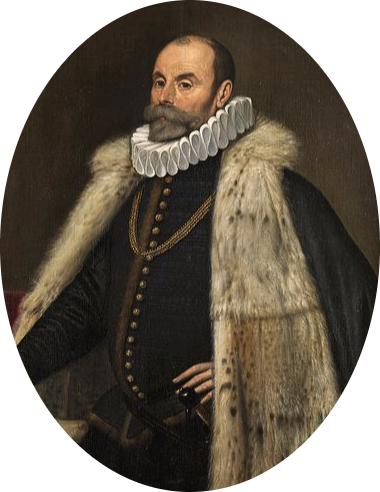
Demetrius Ruthern, 2nd Duke of Vidaus
1688 A.H. – 1707 A.H. | 241 E.S. – 260 E.S.
Demitriyus Ruthern (Common: Demetrius Ruthern) was a Haeseni nobleman who served as Lord Palatine for the majority of Robert I’s reign. Despite his long tenure and reasonably powerful position, the majority of control was vested in Demitriyus’ more competent underlings and secretary, retaining power only through his close friendship and marital ties with the sovereign. He remained out of most states of diplomacy, military, and city stewardship, and as remarked by his contemporary Lerald Gambinoel (Illatian: Larry Gambino), “If he was not the most competent placeholder known to our realm, I do not know who is.”
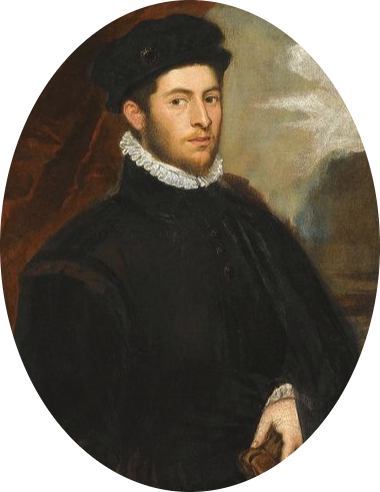
Constantine Ruthern, 3rd Duke of Vidaus
1707 A.H. – 1709 A.H. | 260 E.S. – 262 E.S.
Konstanz Ruthern (Common: Constantine Ruthern) was a Haeseni nobleman, the son of the former Duke of Vidaus and Lord Palatine Demtriyus Ruthern, who served in the palatinate himself from 260 until his resignation in 262. As a personal friend and childhood companion of Marus II, he appointment came more from familial relations than merit. After an underwhelming two years in office, with wanting to focus on his personal estates and family, he resigned from government to live a life remaining mostly out of the political limelight.
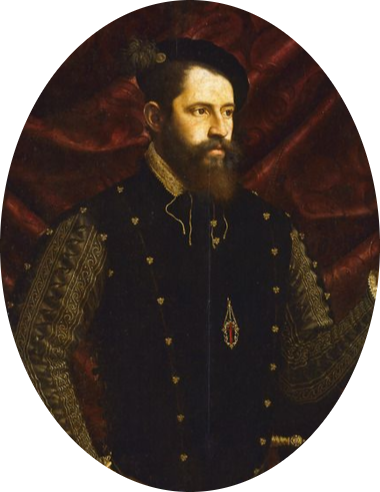
Leopold Stafyr, 1st Count of Nenzing
1709 A.H. – 1718 A.H. | 262 E.S. – 271 E.S.
Leopold Stafyr (Common: Leopold Stafyr) was a Haeseni nobleman and Count of Nenzing serving as Lord Palatine between 262 to his death at 271 under King Marus II. Leopold was the son of disgraced Lord Marshal Sergey Stafyr, and despite the recent fall of his family, had during his time as pater familias managed to re-elevate his family to comital status and strengthened his own political power, leading to King Marus summoning him to serve as his Lord Palatine following Konstanz Ruthern’s disgrace and resignation. Leopold’s tenure as Lord Palatine coincided with a build-up of tension and military stand-offs in the heartland estates between competing powers of Renatus (led by the imperial-claimant Pertinaxi dynasty) and Adria (who had recently elected Marus II as their duke).
He gained fame in his defense of the sovereign during the subsequent Sacking of Ves (264) and destruction of the Adrian estates, defending Marus both in the court of the Pertinaxi dynasty and during the Adrian massacres. Leopold was also seen as instrumental in the Nenzing Plot where high lords of the Empire convened in a chamber deep within the castle of Nenzing to plot a revolt to replace the Pertinaxi dynasty with the Marnantine dynasty. After the plot was unraveled by imperial spies, Leopold orchestrated the first imperial coronation of a Holy Orenian Emperor in over a century of civil turmoil, sparking the War of Two Emperors.
During the war Leopold fought in the victorious Battle of Upper Rodenburg, though suffered defeats at both Lower Rodenburg and the crucial Siege of Helena (269), before being killed at the Second Battle of Leuven (271) due to an infected arrow wound. Under Leopold’s tenure, he completed the first Haeseni Law Codex, though it remained unpublished till the end of the War of the Two Emperors under King Andrik III, and heavily sponsored the Duma and its subsequent rise in political influence.
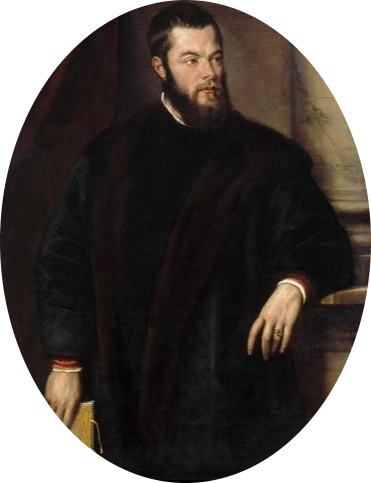
Sir George Alimar, the Elder
1718 A.H. – 1720 A.H. | 271 E.S. – 273 E.S.
Sir Georg Alimar (the Elder, not to be confused with his nephew Georg the Younger, Palatin XXV) (Common: George Alimar) was a Haeseni prince and statesman during the last year of King Marius II and in the early accession of King Andrik III. He led government in the disastrous final stages of the War of Two Emperors, coordinating the defenses of the southern borders of Haense and maintaining the realm following Marus II’s untimely assassination. However, following conflicts between himself and nobleman Lerald Vyronov, he was captured when enroute to his country estate by enemy soldiers of the Pertinaxi dynasty and subsequently assassinated.
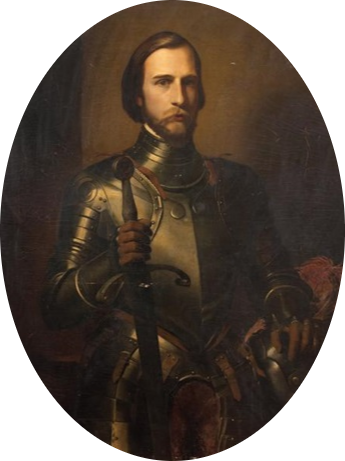
Lerald Vyronov, 15th Duke of Carnatia
1720 A.H. – 1732 A.H. | 273 E.S. – 285 E.S.
Lerald Vyronov (Common: Laurence Vyronov) was a Haeseni nobleman and the Duke of Carnatia, serving as Lord Palatine from 273 till his death in 285 following the assassination of his predecessor. Lerald belonged to ancient though relatively minor Haeseni aristocratical family, and though his clan was usually overshadowed by the elder Karovic clans, he became a leading political and Feudalist in the Duma, and became one of the spokesmen for the preservation of ancient noble rights. Ascending the position of palatine during the late stages of the War of Two Emperors, he was the one to lead and negotiate the Treaty of Leuven (274) for the Haeseni front, ending the war whilst ceding southern territory to the heartlander estates. His tenure saw moderate success in rebuilding the war-exhausted realm, including a sizable regrowth of the army by the early 280s. He was known as a staunch feudalist as well, and used his position numerous times to gain advantageous titles and holding for his supporters, including his very own elevation as Duke of Carnatia.
Despite an admirable record as palatine, Lerald came under a string of accusations against him in a public hysteria known as the ‘Vyronov Conspiracy’. He became connected to loses and suspected sabatoge in the previous war, connections between himself and former enemies from the heartland estates, the murder of his predecessor Prince Georg Alimar, and to some even the assassination of the former King Marus II. Beginning the late 270s, a coalition of influential politicians of the Duma and local nobility formed against him and propagated the conspiracy. Towards the end of his life he became increasingly paranoid and avoidant of public appearances, later to die under suspicious circumstances in 285.
Lerald’s tenure as Lord Palatine coincided with a regrowth of Haeseni scholarism and literacy, and by the peak of his career, the Haeseni state maintained the highest literacy and population growth as according to imperial censuses. The reconstruction of the war-torn capital was begun under Lerald as well, though its completion would not be realized till his successor Konrad Stafyr.
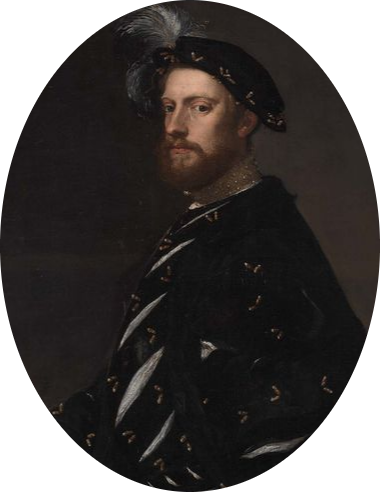
Sir Terrence de May, VKML
1732 A.H. – 1733 A.H. | 285 E.S. – 286 E.S.
Terenz Mau (Common: Terrence May) is a Haeseni-Heartlander statesmen, descendant from burgher Heartlander refugees who were displaced from Johannesburg and escaped to the North during the Coalition War. A fisherman by trade, May began his ascent into politics after garnering support by his local fishing guild in the County of Ayr, rising to prominence following his appointment to the Duma in representation for the Baruch family, lobbying for the fishing and whaling industry. He was appointed Lord Palatine due to his political savvy with the Imperial government in the wake of the Imperial succession crisis.
During his brief term, Terrence May embarked on an ambitious domestic program. He introduced the largest spending measure in Haeseni political history, a package of proposals to fund military, education, and infrastructural provisions. However, his support in the Duma was eclipsed by skeptics and Stephanian-Centralists who believed his policies promoted radical Feudalist efforts to drain the royal treasury. Following a failed bill which would have expanded the Haeseni river systems in a series of canal expansion (which was later given royal assent), he was forced to resign, though remaining active in Haeseni local and imperial politics.
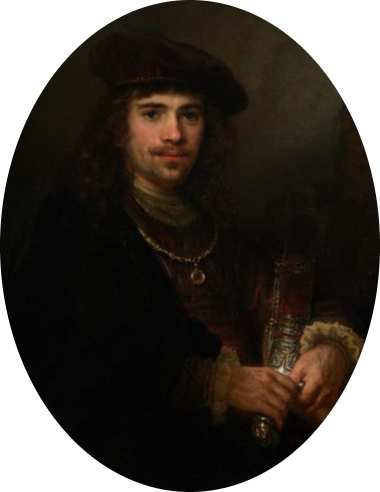
Sir Conrad Stafyr, HKML
1733 A.H. – 1741 A.H. | 286 E.S. – 293 E.S.
Sir Konrad Stafyr (Common: Ser Conrad Stafyr) is a Haeseni nobleman and the cousin of the late Leopold Stafyr, Count of Nenzing, belonging to one of the family’s numerous branches. Originally beginning his career as a bureaucratic clerk under Georg Alimar, Konrad represented the Stafyr family in the Duma for several years and was influential in the early development of the body as one of the first Speakers. The longest serving officeholder in that post, he was called up to the palatinate in 286 in wake of the collapse of Terrence May’s government. Unlike May, who came from lowly gentry and was resented by the established aristocracy, Konrad belonged to the elder echelons of Haeseni nobility and had an easier time in achieving compromise between the Centralist government and the Feudalist landowners.
During his tenure in office, Ser Konrad pursued a strong domestic agenda to build upon the domestic achievements of his predecessor Lerald Vyronov, and to a lesser extent, May. Konrad oversaw the completion of the reconstruction of the royal capital (originally damaged in the War of Two Emperors and repairs began under Vyronov), the creation of the first royally-funded grammar school and university, and the increased regulation on commerce, most notably his seizure of the capital inns and taverns and any outlying properties. He also presided over several emergencies during his tenure as palatine, the most notable a short crisis (Crisis of 289) between a provincial-led movement of the Provincial Commission (composing of Haense and numerous other states) and the Imperial government over rights of law and gubernatorial authority. Konrad himself was lead emissary in talks between the two parties, and despite fierce opposition from Feudalist detractors, he propagated a policy of unionism and reconciliation with the federal government and signed the Treaty of Renzfeld (291), disbanding the provincial alliance entirely.
The economic and military growth of the kingdom continued under Konrad, and despite participation in the short Orcish-Imperial campaign, the realm remained peaceful and mostly prosperous. With advancing age and personal interests in family matters, Konrad resigned in 293 to his northern estate, spending the majority of his life in companionship with his wife and youngest daughter.

Sir Marcus Kortrevich, 1st Margrave of Korstadt
1741 A.H. – 1752 A.H. | 293 E.S. – 305 E.S.
Markus Kortrevich (Common: Marcus Kortrevic) is a Haeseni nobleman and knight, belonging to the nascent Kortrevich family of originally gentry origins and serving as Lord Palatine from 293 ES to 305 ES. Once a commander and soldier in the armies of Robert I and Marius II, cutting his teeth with the brutal conflict of the War of Two Emperors, Markus rose up in the civil Haeseni administration as centralist protegee under the senior politicians Ser Terenz Mau and Ser Konrad Stafyr. After the former’s lackluster tenure and the latter’s more successful yet domestically-oriented tenure, Markus was called up to the palatinate, chiefly for his lofty military experience and centralist roots, upon the start of the civil conflicts in southern Haense. Leading a war-time administration, his early career came dominated in the field as commander-in-arms to Andrik III, successfully warding off an assault on Reza (294) by rebel forces and scoring a victory at Hangman’s Bridge (295) in the later spring.
While Markus rode the laurels of military achievement, domestically his administration came under siege by rival feudalist opponents. After Markus halted all government projects during the war, including the construction of the canal connecting the river Karov to lake Helena, the feudalist majority called and passed (7-5) a vote of no confidence upon the palatine, though in a political twist of fortune was ignored by Andrik III, leaving him in control of government. In the years following, Markus, as leader of the centralists, would reconstruct its majority in the Duma after a feudalist domination of twenty years, and by the end of his twelve years as palatine, would have flipped the Duma entirely from its traditionally anti-centralist views. Most infamously, Markus survived both an assassination attempt (orchestrated by a disgruntled feudalist during the canal crisis) and later a short time as prisoner of war during the winter months of 299.
Markus also continued sponsoring learning and education during his tenure, including the foundation of the first university (called the St Charles University of Reza) under the lead of his later palatinate successor, Georg Alimar the Younger. Later in his career, when the war drifted further from Reza, he continued the work of reconstructing and maintaining the defenses of Haense’s central region. Markus maintained government until the young Andrik IV’s mortal injury and regency, which came instead to be controlled under the military by lead of Sir Tybis Barrow. This transfer of government would eventually lead to Markus’ willing resignation, though he maintained his position in administration as Knight Paramount.
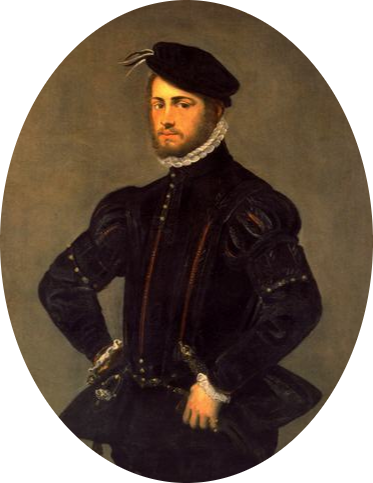
Sir George Alimar, the Younger
1752 A.H. – 1756 A.H. | 305 E.S. – 309 E.S.
Sir Georg Alimar (the Younger, not to be confused with his uncle Georg the Elder, Palatin XX) (Common: George Alimar) was a Haeseni prince and statesman of the Alimar family, serving a palatine briefly for two years from 305 to 307. Originally a scholar by trade, he was called up to the palatine after then-regent Sir Tybis Barrow took control of government upon Andrik IV’s untimely death, though nearly all affairs of government remained vested and in-control of Tybis’ junta regency and Georg himself remained more or less figurehead within the Haeseni administration. With this relationship, most of Georg’s attention focused instead upon the sponsorship and philanthropy of the newly-established Haeseni universities within the realm (namely, the St Charles College of the capital) and commercial ventures, such as the founding the Haeseni Trappers and Fur Company and the hostile takeover of many struggling companies, including the Ludovar Mining Guild (a copper mining company sold to Georg by the 4th Baron of Rostig-Otistadt) and the Southern Haeseni Express. After Tybis’ death in battle in 307, Georg was quickly sidelined by the administration (ironically led by his father, the 4th Prince of Muldav) and retired to serve as president and dean of the St Charles College.
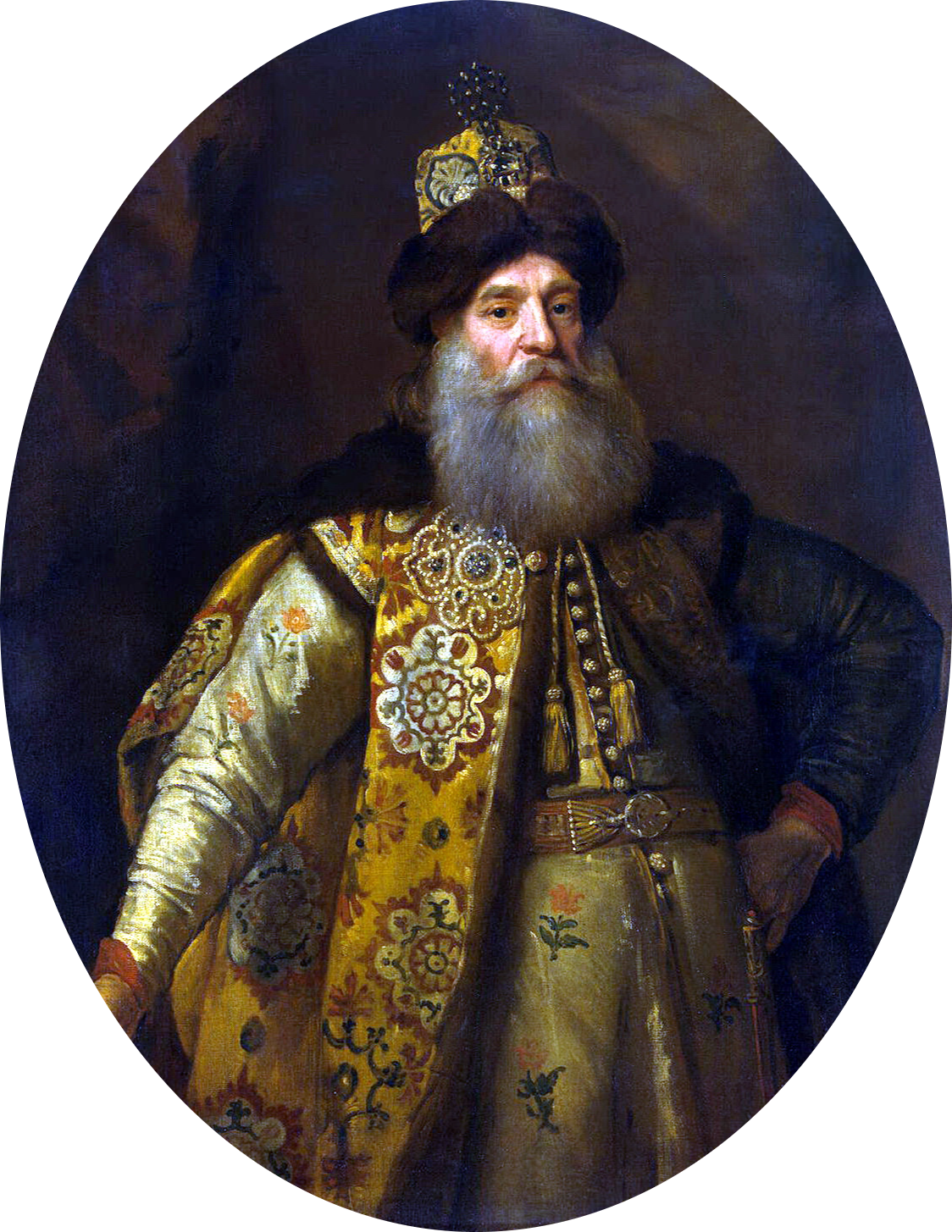
Otho Alimar, 4th Prince of Muldav
1756 A.H. – 1764 A.H. | 309 E.S. – 317 E.S.
Otto Alimar (Common: Otto Alimar) was a Haeseni prince and statesman of the Alimar family, serving as palatine for nearly a decade from 309 to 317. After the resignation of his son, the elder Alimar assumed office as the prominent figure of the Aulic Government, shepherding the regency until King Sigmund II came of age. Not without controversy, Prince Otto’s appointment as the second consecutive Alimar to preside over the Aulic Government, sparking doubts of his legitimacy by the Valwyck Pact, a lobby of Feudalist lords. During his tenure, Prince Otto clashed with the peers over fiefdom regulations, favoring a centralized approach to architectural styles and land surveys. The compromise with the Valwyck Pact ensured a continuity of government and a codification of the rights of the nobility.
Another notable policy of his tenure saw the reforms of the Haeseni military structures, reorienting the Brotherhood of Saint Karl into the Haeseni Royal Army. Other policies include the expansion of state mercantilism with the formation of the Haeseni Fur and Trade Co. with Lord Tiberius Barrow and Lord Rennard Amador to increase revenues. In the realm of foreign affairs, Prince Otto presided over the waning period of the AIS War and the War with Rubern, signifying an end to decades of tension from the early 1700s.
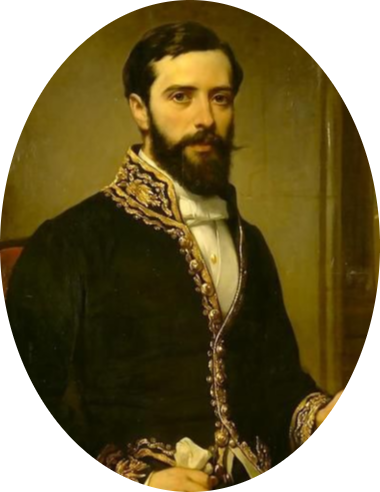
Peter Baruch, 2nd Duke of Valwyck
1764 A.H. – 1776 A.H. | 317 E.S. – 329 E.S.
Petyr Baruch (Common: Peter Baruch) was a Haeseni nobleman, belonging to the ancient House of Baruch and served as Lord Palatine from 317 ES to 329 ES. Prior to this elevation to the Aulic position of Palatine, Petyr Baruch served as the second Duke of Valwyck and later the leader of the Valwyck Pact which was one of the many proponents that led to his eventual appointment to the Palatial Office in 1764. Throughout his tenure, Duke Petyr was instrumental in aiding the Haeseni vassals of Ruthern and Vanir in settling in the Wickwood. Around the same time, the Ducal Palatine resolved the Lendian Crisis that was taking place in the Kingdom for a number of years.
Prior to his assumption of the Palatine position, he had many plans and aspirations for the Kingdom that he himself wished to task himself with completing; one of them being the reform of the Aulic Council which led to the recreation of the position of Deputy Palatine (p. Palatine-Aspirant) and the replacement of the Lord Kastellan position with the Royal Envoy (c. Aulic Envoy) position. Later on during his twelve years as Palatine, he completely overhauled the Aulic Government to become a more bureaucratic system known as one of the first of many ‘Aulic Edicts’ passed by King Sigismund II and later King Josef I.
The vast majority of Petyr Baruch’s tenure as Palatine took place subsequently throughout the Scyfling Invasion where he himself led a number of defenses at his home fief in Valwyck (located in the northern reaches of Haense). Later in his life following his wife’s sudden death, his mental state sharply declined which led to him assuming his son was responsible for his wife’s unforeseen death, resulting in his own son killing him in an act of self defense. As a result of such events, Petyr Baruch was later succeeded by his colleague, Konstantin Wick in 1776, the very same year King Sigismund II took his own life.
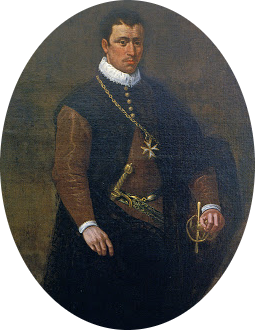
Sir Constantine Wick, HKML
1776 A.H. – 1808 A.H. | 329 E.S. – 361 E.S.
Sir Konstantin Wick (Common: Sir Constantine Wick) was a renowned attorney of law, later serving as palatine from 329 ES to 361 ES. Serving as the longest serving Lord Palatine to date, Sir Wick was appointed following the retirement of his predecessor and the abrupt death of King Sigismund. His tenure was defined by nearly three decades of service which saw the end of the AIS War, the annexation of Rubern, the Independence of the Kingdom of Hanseti-Ruska from the Holy Orenian Empire, and the codification of a modern Haeseni law code. He was also a notable Josephite politician in Oren, serving concurrently as President and Member of the House of Commons prior to the Treaty of Helena of 1786.
Despite being a member of the Wick clan, Sir Konstantin’s tenure also saw a dramatic unfolding of tensions between his kinsmen and the state. Throughout the reign of King Josef, a series of incidents regarding alleged brutality by the Haeseni Royal Army (HRA) upon the Wicks, stemming from a systemic history of marginalization that dates back to the early Bihar Era. Palatine Wick was unable to foresee and prevent incidents regarding the Wick arrests, closure of the New Reza library, and the protests concerning corruption in the HRA. These events were depicted by the Golden Crow Chronicles as the ‘Nikirala of Discontent.’
Following the independence of the Kingdom of Hanseti-Ruska, Palatine Wick was instrumental in the establishment of an independent judiciary. The codification of the Haurul Caezk is considered by many to be the epitome of a storied career. Sir Wick was also a patron of legal philosophy and legal education, thereby shepherding the role of lawyers, the courts, and jovenaars.
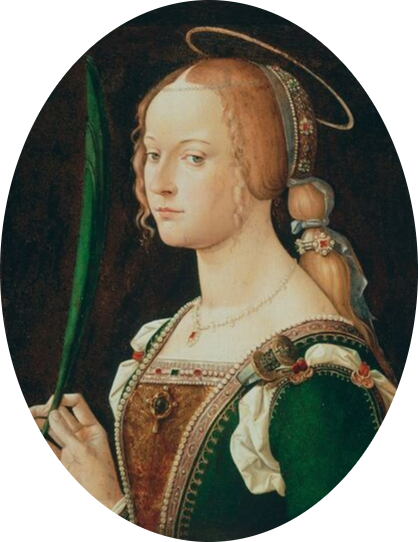
Marcella Barclay
1808 A.H. – 1810 A.H. | 361 E.S. – 363 E.S.
Marcella Barclay (Common: Marcella Barclay) was a Haeseni noblewoman from the militant House of Barclay, serving as palatine briefly from 361 ES to 363 ES. She is the first woman to serve as the Palatine of the Realm. In her first year as Palatine, she directly oversaw the naming of all the land encompassed by the Haeseni realm on Almaris. In her second year as Palatine, she saw reason to reallocate funds to the Haeseni Royal Army to benefit them with new armaments and supplies. As a result of such action, the Army under the leadership of Lord Marshal Friedrich Barclay saw increased morale throughout the Rimetroll raids.
Despite Marcella only being in the Palatial Office for the better part of two years, she was instrumental in campaigning for the first elven house to obtain Haeseni nobility. Through her efforts, the House of Asul’onn was granted Haeseni nobility a few years following her resignation. Directly following her resignation, her Deputy Palatine, Maric var Ruthern succeeded her as the twenty-ninth Lord Palatine. Nothing more of significant note occurred during the first female Palatinialship, although it is to be noted that since her elevation to become the first Lady Palatine, more and more women in Haense have garnered the ambition to strive to further heights in the Kingdom of Hanseti-Ruska.
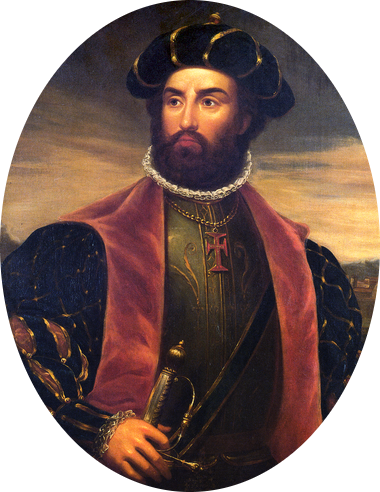
Marick Ruthern, 6th Duke of Vidaus
1810 A.H. – 1826 A.H. | 363 E.S. – 379 E.S.
Maric Ruthern (Common: Marick Ruthern) is a Haeseni nobleman and Duke from the ancient House of Ruthern, serving as palatine from 363 E.S. until his resignation in 379 E.S. Prior to his ascension to become the twenty-ninth Lord Palatine, Lord Ruthern was appointed as Deputy Palatine underneath Lady Marcella’s palatinal administration. Following the unforeseen resignation of his predecessor, King Heinrik II quickly appointed the Duke to ascend to the Palatial office.
As the third Ruthern to occupy the Palatial office, he quickly took command as he led the Aulic government through a strenuous time during both the Rimetroll War and the expedition to the Attenlund province. Throughout his tenure in office, Lord Ruthern; the Stephanian-Centralist, placed a distinct emphasis on both solving domestic issues and issues abroad, while keeping the interests of the Kingdom at a forefront. Many of these issues including; The Greyspine Convention, The Eftenbach Edict, the reallocation of funds to the Northern Geographical Society and reforms to dueling and nobility laws were all measures that were assisted by the purview of the Ducal Ruthern. As is the case with every Palatine, conflict is inevitable to occur, Lord Ruthern’s tenure was no exception. Immediately after the Royal Academy operated for eight years (specifically, the Royal Academy of St. Charles), Lord Ruthern was delegated responsibility of the Academy after Hauchdragus Sir Viktor Kortrevich’s resignation, which quickly led to the institution’s collapse. Although it is to be noted that later on in his tenure, the return of the formerly used ‘Haeseni Civil Service Exam’ came to fruition after the founding of the University of Saint Otto in 376 E.S.
In his latter years as Palatine, he also assumed responsibility of High Justiciar briefly for three years following the vacancy left after High Justicar Matyas Baruch (VIII) was suddenly murdered. During his time as High Justiciar, he presided as the prosecutor of two major trials; the Baruch, et al. vs. Surgeon General of Hanseti-Ruska trial and the Ruthern vs. Wick trial. As the head of the Aulic Council, Lord Palatine Maric var Ruthern was someone who aided in keeping the peace during the incursion of the Rimeveld and helped mend relations between vassals and neighboring states. After sixteen long years as an occupant of the Palatial office, the elder Duke willingly resigned to his estate in Vidaus wherein he lived a life focused on family. As a result of such a decision, Attenlund expeditioner Adrian Colborn ascended to the Palatial office.

Aydrian Colborn
Aydrian Colborn
Adrian Colborn
1826 A.H. – 1841 A.H. | 379 E.S. – 394 E.S.
Biography in Progress.
Kaustantin Baruch
Constantine Baruch
1841 A.H. – 1849 A.H. | 394 E.S. – 402 E.S.
Biography in Progress

Eirik Baruch
Eirik Baruch
Eric Baruch
1849 A.H. – 1873 A.H.| 402 E.S. – 426 E.S.
Eirik Matyas Baruch (Common: Eric Matthias; Ayrian: Eiric Maiteas), known formally as the Duke of Valwyck, or referred to simply as Eirik, was the sixth Duke of Valwyck, succeeding his father. He was the first and only son of Duke Ruslan Baruch and Marjorie Baruch. He was the thirty-second Lord Palatine of Haense, assuming the position in 1849.
Having served as the Deputy Palatine to Kaustantin Baruch since 1845, Eirik ascended to the position in late 1849 upon his predecessor’s resignation, though he was not officially bestowed the Golden Bulava until early 1850. At the time, his appointment had seemed obvious, as the Palatial Office had very few people in it, and he was the only one that particularly stood out.
Upon the time of his ascension, the realm was mainly plagued by matters of foreign diplomacy, the downfall of Emperor Philip II and the succession of Philip III to the Imperial Throne, followed by the combined effort of Oren and Savoy to overthrow High Pontiff Everard VI. Eirik was personally present during the schism attempt, and ordered the successful evacuation of the High Pontiff. These events would eventually culminate in the start of the Sinners’ War.
As the war took the attention of Sigismund III and Eirik, domestic matters were given less emphasis, though Eirik nevertheless saw to develop a functional ward system for the Palatial Office, to which he managed to recruit a large number of the next generation, whom he taught lessons and gave Palatial Ward Points (a service in which they could redeem favours from him, it is known that, for example, Konstanz Barclay received keys to the Lord Palatine’s Office) for attending lessons, completing tasks, and generally being a presence within the Kingdom.
He was one of the primary supporters of the Karenina Accord, having been present at the meeting where the initiative for the Accord was started, and he frequently attended rallies and protests in favour of the Accord. He was the one to pen the Karenina Law, which passed unanimously in the Royal Duma, and brought upon a new age of Women’s Rights in Haense, now that women would inherit on the same terms as men.
He also attempted to implement a position called Palatial Liaisons, which were meant to be individuals assigned to communicate specifically with another Aulic Office, but due to a lack of engagement from the Aulic Councillors regarding the establishment, he had to resort to simply hosting meetings of the Aulic Council more frequently, especially as such had rarely been held since the tenure of Konstantin Wick.
Due to his aptitude for history, Eirik also revived the tradition of Chancellor’s Reports, which had last been done during the tenure of Terrence May, over a hundred years before Eirik’s own appointment. He published four Chancellor’s Reports during the war, where three of them mostly pertained to the Sinners’ War, and the last to the death of Sigismund III. He resigned in 1873, a month into the reign of Karl III. He was succeeded as Lord Palatine by his daughter, Isabel.

Isabel Baruch
Isabel Baruch
Isabella Baruch
1873A.H. – 1888 A.H. | 426 E.S. – 441 E.S.
Isabel Alexandra Baruch (Common: Isabella Alexandra; Ayrian: Iseabail Leacsaidh), was the eighth Duchess of Valwyck and the 33rd Palatine of Hanseti-Ruska. She was the second ever Lady Palatine and the second matriarch of House Baruch, following her father’s abdication of his titles and his resignation as Lord Palatine.
